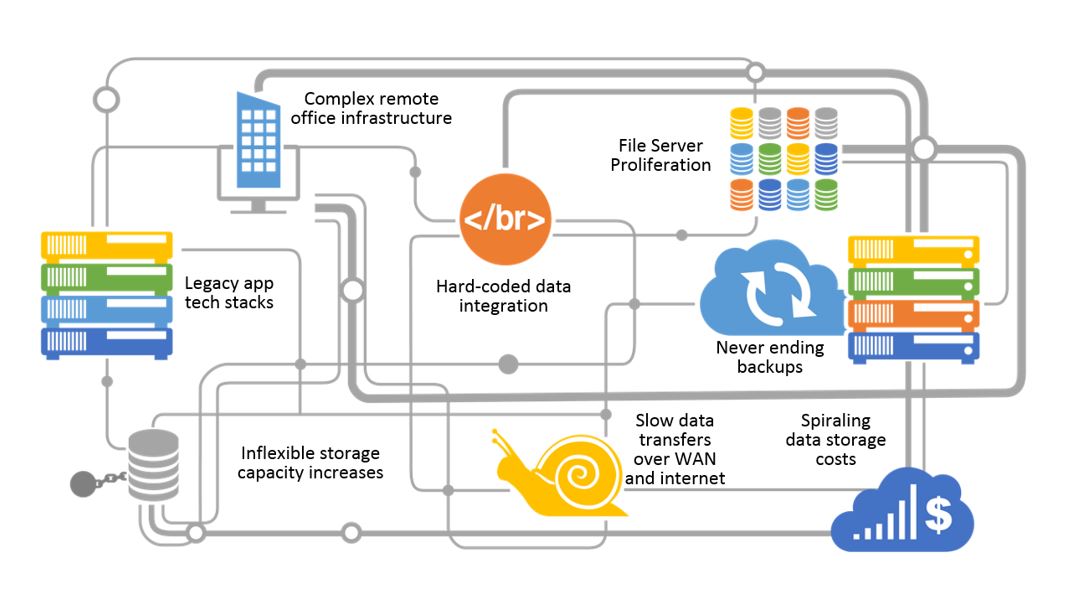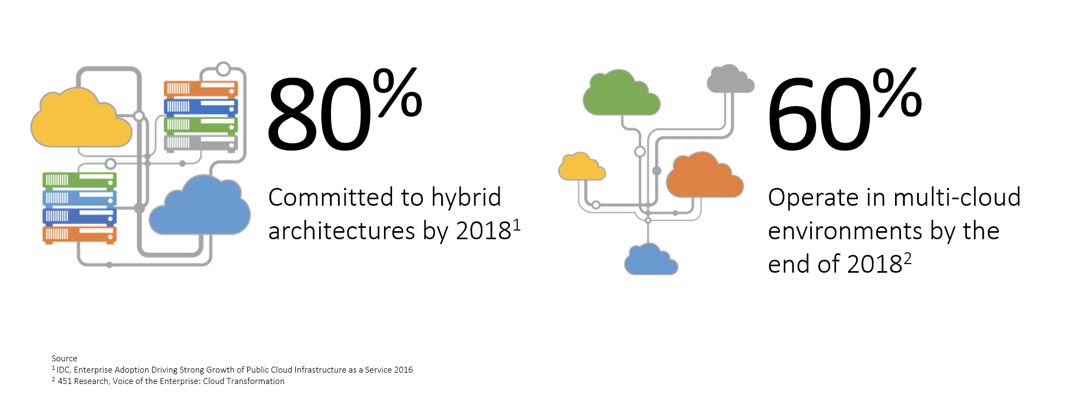The IT Archaeological Dig of Technology and the Cloud
I must admit something right up front here – I love technology! I’m a techno-geek on most every level, in addition to having done a lot of other stuff in my career and personally with technology. Most people don’t know, but I recently got my ham radio license again after being inactive for 45 years… but that’s another story. One of my latest radio projects I’ve been working on after hours for almost a year involves what is essentially an IoT device for ham radio antennas.
I find technology relaxing and satisfying, especially electronics, where I can get away from the stresses of business and such and just focus on getting that next surface mount component properly soldered. Given my busy schedule, I make slow but unrelenting progress on these types of background projects, but it beats wasting away in front of the TV. In fact, I should probably order one of these hats from propellerhats.com and wear it proudly.

As a bit of background on this blog post, when I was CTO at CITRIX Systems, I used the term “archaeological dig of technology” to describe the many layers of technology deposits that I saw our customers had deployed and that we continue to see companies dealing with today. The term caught on internally and even our then CEO, Mark Templeton, picked up on and it and used it from time to time, so the term stuck and resonated with other technologists over the years. Mark and I had a friendly competition going to see who could come up with the coolest tech. Mark usually won, being the real chief propeller head. We had a lot of fun winning and growing CITRIX together in those days…
So, what do I mean by the Archaeological Dig of Technology aka “The Dig”? I would describe it as the sum total of technologies that have been deposited within an enterprise over time.
The Dig is the result of buying and deploying packaged applications, in-house applications, external service integration, mergers and acquisitions and other forms of incrementalism adding technology acquisition and automation to our businesses over time. It’s surprising how much technology accumulates with time.
The following diagram attempts to depict a typical dig one might find at companies today. It’s by no means complete, but merely attempts to illustrate some of the components and complexities involved. For most, this is probably an oversimplified perspective highlighting the types of technologies and related issues that have accrued.
What we see above is a complex set of application stacks running across virtual machines, physical servers, and data stored across various proprietary vendor storage gear. There’s numerous hard-coded data integration paths across applications, technology stacks and SaaS providers, tentacles to and from remote offices, branch offices and offshore manufacturing facilities spread around globally. The challenge with global data and the cloud is the latency and congestion that limits us over the WAN and Internet.
File servers have proliferated around the world into most every nook and cranny they could fit. And now there’s so much data piling up to be protected that for many large enterprises, weekly full backups have turned into monthly backups and the wall of data keeps getting higher. Customers tell us that they see the day coming when even monthly full backups won’t be feasible. The costs continue to mount and there’s no end in sight for most growing companies today.
For large enterprises, the term “dig” doesn’t adequately describe the full breadth and depth of the technological sediment involved, which is truly expansive. For these companies, there are numerous Digs, spread across many data centers, subsidiaries and physical locations – and clouds.
For small to medium size companies, it’s amazing how many types of technologies we have deployed and integrated together to run our businesses. While much less complex than The Digs of larger enterprises, relative to our size our digs are often just as challenging with our limited resources, and are often outsourced to someone else to deal with.
If we think about the bottommost layer of The Dig as the earliest forms of technology we acquired, for many that is still the mainframe. It’s amazing how many companies still rely on mainframe technology for much of their most critical transaction processing infrastructure. This brings with it various middleware that links mainframe beast computing with everything else.
Unlike minicomputers, which went the way of the dinosaur quickly, client-server and PC era technologies followed and stuck, comprising a large portion of most enterprises’ digs today. Citrix helped hundreds of thousands to organize and centralize most of the client-server layer, so it’s now contained in the data centers and continuing to serve the business well today.
Web technology layers came next and became a prevalent layer that remains centralized for all users, ranging from B2C, B2B and B2E via SaaS layers that sit outside our data centers in someone else’s digs.
Then we realized we have too many servers and they’re not all busy doing work, yet they take up space and cost money to maintain and power up 24 x 7. Enter the virtualization and server consolidation era, and the next major new layer reorganized The Dig into a more manageable set of chunks affectionately known as Virtual Machines. VM’s made life sweet, because we can now see most of The Dig on one console and manage it by pushing a few buttons. This is very cool! VMware ushered in this era and owns most of this layer today.
Of course, Apple, Google and others ushered in the mobile computing era, another prevalent and recent layer that’s rapidly evolving and bringing richness to our world. To make things easier and more convenient, Wi-Fi and 3G then 4G and next 5G wireless networks came to the rescue to tie it all together for us and make our tech world available 24 x 7 everywhere we go.
IoT is now on the horizon and promises to open amazing new frontiers by melding our physical world increasingly with the virtual one we work and live in. We have the Big Data and data warehouses and analytics systems to try and make sense of everything, as the number of layers and complexity of The Dig becomes overwhelming as it accelerates in size, data growth and the intensity of complexity stresses our abilities to understand, manage and keep it all secure. Speaking of security, there’s entire other layers which are there solely so The Dig doesn’t get infiltrated and pilfered endlessly.
Unfortunately for many, as we have seen all too often in recent news, for some The Dig has been penetrated by hackers, exposing some of our most precious personal information to the bad guys. As if that’s not disturbing enough, we find out that encryption, that layer which insulates us from the bad guys in cyberspace, is compromised at the edge with our Wi-Fi devices!
So, what’s the next layer? Obviously, the clouds, machine learning and someday real Artificial Intelligence. And we already hear the pundits telling us that AI will change everything! Of course, it will. Maybe it will figure out how to reorganize The Dig for us, too!
Underneath these big animal picture layers, we have the actual underlying technologies. Now I’m not going to attempt to provide a complete taxonomy or list here, but it’s the entire gamut of devices and appliances deployed today, including mainframes, middleware, client-server, virtual servers, cloud servers, Citrix servers, provisioning and deployment tools, systems management, e-commerce systems, networking, firewalls, plus programming tools and stacks (.NET, JAVA, MFC, C++, PHP, Python, …) and traditional operating systems like Linux, Windows, Mac OS X, iOS, Android, … and the list just keeps going (way too long to list here).
What I find most amusing is how the vendor marketing hype cycle invariably tries to convince us that this latest technology wave will be the “be all, end all” that will take over and replace everything! Nope – not even close. It’s just the next layer of The Dig being promoted for immediate adoption and installment. It will either replace an earlier layer or (more likely) add a new layer atop the existing Dig and bring with it new tentacles of integration and complexities of its own.
Perhaps an obvious question to ask is “how could this happen?” or “what can be done to keep The Dig from spiraling out of control?” or “who’s responsible for this and making sure it doesn’t happen?”
My guess is we may not like the answers to those kinds of questions. It happens because companies need to compete, adapt and move quickly to grow. Each technology acquisition decision is usually treated as a discrete event that addresses a current set of priorities and issues evaluated in isolation, but nobody is truly responsible for or capable of managing The Dig strategy overall. I mean, who has the title “The Dig Director” or “The Chief Dig Officer”?
Ultimately, IT is typically held responsible for keeping The Dig running, updated, patched, secured, performing well, available and operational to meet the business’ needs. IT is sometimes, but certainly not always, consulted about the next set of layers that are about to be deposited. But increasingly, IT inherits the latest layers and admits them into The Dig and becomes the custodian who’s responsible for running and maintaining it all (with something like 2% to 3% annual budget increase).
So where does “the cloud” fit into this picture? Good question. I suspect if you ask some, they will tell you “finally, the cloud is the one that will replace them all!” Right. Of course, it will. I mean, we’ve been waiting for a long time, surely this must be it! The Dig will be completely “digitally transformed”, replacing all that those other messy, pesky layers that we no longer want or respect like we once did.
Others will probably say the cloud is just one of many IT strategies we have, which is probably closer to reality for most companies, at least over the short haul.
I wish it were really that simple. In reality, “the cloud” isn’t a single thing. There’s public clouds, private clouds, hybrid clouds and SaaS clouds – and each one is yet another layer coming to pile onto The Dig and create a new set of interesting technologies for us moving forward. Most companies can only muster enough budget and resource to rewrite a few apps per year to “digitally transform” pieces of The Dig into the new world order we seek. Alas, rewriting all the apps to Java didn’t work out in the end, so can we really digitally transform everything before the next big thing appears to disrupt our progress?
Multi-cloud is the next reality coming to The Dig near you. The facts are that most companies expect to deploy across many different clouds (up to 10 or more!) and link everything together via various “hybrid cloud” layers… just a friendly heads up – it’s coming soon to The Dig near you. As shown below, industry analysts tell us that 80% of the decision-makers are already committed to adding hybrid clouds and 60% expect to operate multi-cloud environments in 2018.
This means we know what’s coming next to The Dig near us – more layers.
So, what can be done about The Dig we have today, and the new layers being regularly deposited? For most companies, little to nothing. Each layer serves a purpose, adding value to our businesses. Mergers and acquisitions aren’t going to stop. Business units will continue to hire DevOps and Shadow IT to quickly develop new applications, integrate business processes with new cloud services with multiple vendors and then add it to the corporate technology collective.
For smaller to medium size corporations, there’s hope in that much of their technologies can be migrated to one or more public cloud and SaaS platforms. For others, it’s incrementalism-as-usual – do what we must today, it’ll be someone else’s problem to deal with in the future – there’s no strategy other than survive to live another day.
When we step back and consider what seems like a chaotic process full of uncontrolled variables and incremental decisions, I believe there’s hope to eventually unwind from the hairball architectures and reorganize our respective technology digs to make them more manageable.
One of the keys is “virtualization”. The cloud is really a combination of virtual computing and platform services that’s both backward compatible and forward leaning; meaning, we can migrate our existing VM workloads into the cloud and run them, while we lean forward and create new services and applications by tapping into cloud platform services. But is that the be all, end all that’s needed? Probably not.
We need a “data strategy”. I believe there is an elemental piece that’s been missing – the Data Virtualization layer, a data access and control layer that makes business data more portable across storage systems, clouds, SaaS clouds, databases, IoT devices and the many other data islands we have today and will add to The Dig over time.
To achieve the multi-cloud and hybrid cloud diversity and integration that many believe come next, without creating more brittle hairball architectures, there must be a recognition that “data is the foundation” that everything rests upon.
If data remains corralled up and tied down to discrete, platform-specific “storage” devices, applications will never be truly freed up to become portable, multi-cloud or hybrid-cloud. Even clever innovations like modular micro-services and reusable containers will continue to be platform constrained until the data layer is virtualized and made flexible enough to quickly and easily adapt with the evolution to the multi-cloud.
In future posts, I will share details around the SoftNAS “cloud fabric” vision and what we now call the “Cloud Data Platform”, a data control layer that enables rapid construction of hybrid clouds, IoT integration and interconnecting the existing layers of The Dig across multiple clouds.
The Dig will continue to be with us, supporting our businesses as we grow and evolve with technology. It’s clear at this point that the next set of layers will be cloud-based. We will need to integrate the many existing layers globally with the cloud, while we incrementally evolve and settle into our new digs in the cloud era.
NEXT STEPS
Visit Buurst to learn more about how SoftNAS is used by thousands of organizations around the world to protect their business data in the cloud, achieve a 100% up-time SLA for business-critical applications and move applications, data and workloads into the cloud with confidence. Register here to learn more and for early access to the Cloud Data Platform, the new data access and control plane from SoftNAS.
ABOUT THE AUTHOR
Rick Braddy is an innovator, leader and visionary with more than 30 years of technology experience and a proven track record of taking on business and technology challenges and making high-stakes decisions. Rick is a serial entrepreneur and former Chief Technology Officer of the CITRIX Systems XenApp and XenDesktop group and former Group Architect with BMC Software. During his 6 years with CITRIX, Rick led the product management, architecture, business and technology strategy teams that helped the company grow from a $425 million, single-product company into a leading, diversified global enterprise software company with more than $1 billion in annual revenues. Rick is also a United States Air Force veteran, with military experience in top-secret cryptographic voice and data systems at NORAD / Cheyenne Mountain Complex. Rick is responsible for SoftNAS business and technology strategy, marketing and R&D.







